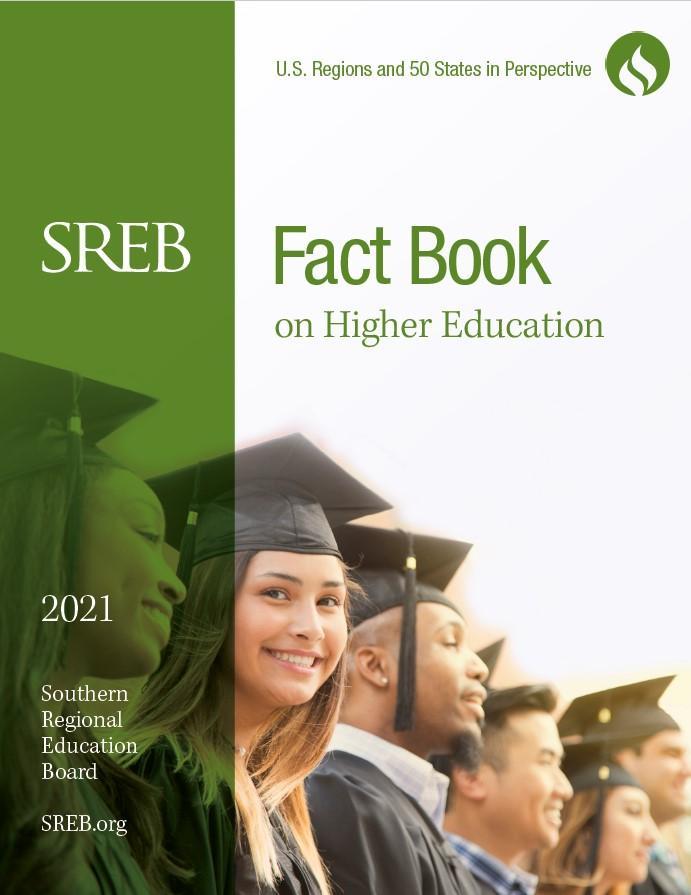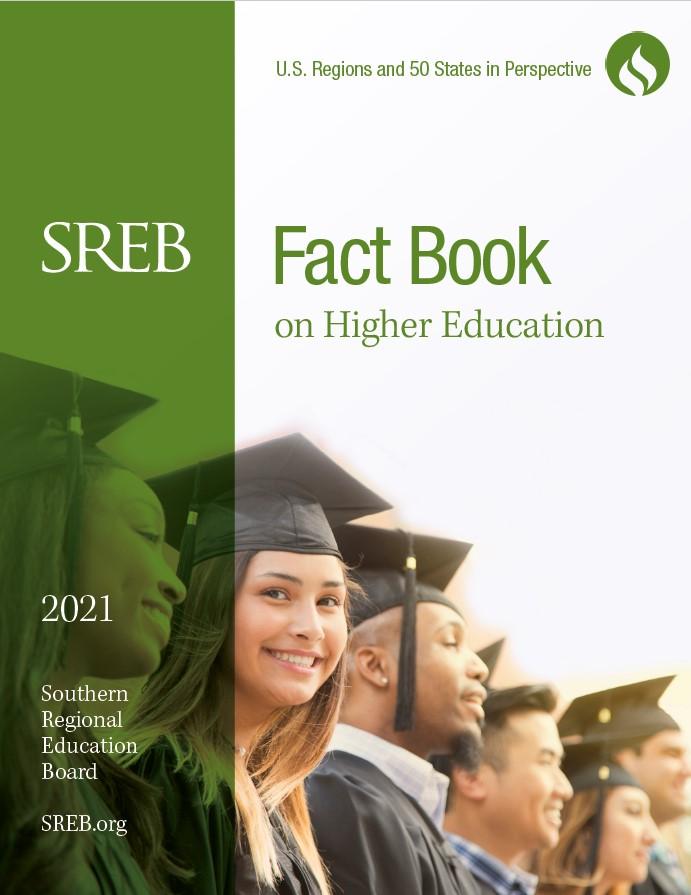Declines in 2-year college enrollment could impact workforce in South, nation
ATLANTA — While overall education levels of the
South’s population continue to rise, the number of two-year
college students in the region began to decline before the
pandemic, then plummeted nationwide during the crisis — raising
questions for state leaders on the future of the region’s
workforce.
Enrollment in two-year colleges fell by about 7% in SREB states,
11% in the U.S. — and by nearly 20% in some states — between 2014
and 2019. The long-term trends are shown in the Southern Regional
Education Board’s latest Fact
Book on Higher Education and
16 individual state data reports, released today.
During the pandemic, two-year college enrollment dropped by
an additional 15% nationwide
in fall 2020 and another
7.8% in fall 2021, according to new data from the National
Student Clearinghouse.
The South and nation need more students to earn two- and
four-year degrees and career certificates, especially among
traditionally underserved groups such as Black, Latino, American
Indian, low-income and first-generation students, as employers
seek to fill openings in many high-demand careers.
SREB has estimated that 18 million adults in the South
could become unemployable by 2025 as technology and
automation transform many career fields.
“To be clear, the South and the nation need many more students to
enter — and graduate — at every level of postsecondary
education,” SREB President Stephen Pruitt said. “That means more
students need to know where they’re headed after high school and
find new levels of support during college — especially if
students had gaps in their schooling during the pandemic.
“Postsecondary education is an engine for economic growth that
can boost every state’s recovery from the pandemic and propel
them into the future,” Pruitt said.
Only Texas among the 16 SREB states saw a rise in two-year
college enrollment, at 5.8%, in the five years leading up to the
pandemic. Oklahoma, South Carolina and West Virginia each had
declines of 19% in two-year college enrollment during the same
period. (See rates for all SREB states at end of this
document.)
Also, the South’s dependent population continued to grow. In
2019, 48% of residents in SREB states were younger than 25 or
older than 64 — and therefore not part of the primary workforce.
By 2030, those dependent groups will likely reach 53% of the SREB
region’s population, outnumbering working-age adults — a first in
modern times, the Fact Book shows.
Total enrollment in all two- and four-year colleges and
universities declined by less than 1% in the 16-state SREB region
and by 3% in the U.S. — the ninth straight year of decline
nationwide — from 2014 and 2019. More than 620,000 fewer
full-time students attended U.S. public and private colleges in
fall 2019 than just one year earlier.
Among the SREB states, total enrollment for all colleges rose
only in Georgia, Kentucky, and Texas in the same five years,
according to the Fact Book.
Historic population dips for traditional college-age Americans
and the long-term rise in college costs are likely among the
major reasons for declining college enrollment, researchers have
found.
In the South’s public and private four-year institutions,
enrollment rose by 4% from 2014 to 2019. Ten of the 16 SREB
states saw increases in four-year enrollment during that
period.
Undergraduate enrollment in the South fell by nearly 2% in two-
and four-year public and private institutions in the same period,
however — mostly because of declining two-year college
enrollment, the Fact Book shows. Total undergraduate
enrollment was up in three SREB states from 2014 to 2019:
Delaware, Georgia, and Texas.
SREB first published the Fact Book on Higher Education
in 1956. Now mainly online, the Fact Book compiles
hundreds of data sets gathered by the SREB-State Data Exchange
and federal agencies. Comparison data is available through 2019
in most cases.
Other key highlights from the latest SREB
Fact Book on Higher Education:
Education levels rising overall: About 40% of
working age adults in the South and 43.2% in the nation held a
two-year degree or higher in 2019. Both rates have risen slowly
for many years.
More shifts in student demographics: The number
of Hispanic college students in the South continued to grow from
2014 to 2019, while the numbers of Black and white students
declined.
White students represented 51% of the South’s total college
enrollment in 2019, down from 55% five years earlier. Black (down
from 22% in 2014) and Hispanic students (up from 16%) each made
up 20% of the region’s overall enrollment in 2019. About 6% of
the region’s college students were from Asian, American Indian,
Alaska Native, and Pacific Islander backgrounds.
Hispanic enrollment soars: The number of
Hispanic students in all Southern colleges and universities rose
by 24%, or 237,000 students, from 2014 to 2019. The South’s
largest concentrations of Hispanic college students in 2019 were
in Florida and Texas, representing 30% and 42% of those states’
total enrollment, respectively.
Fewer Black students, but more degrees: The
number of Black students in college in SREB states fell by 9.5% —
or more than 129,000 students — from 2014 to 2019. Sixteen
percent of the South’s Black college students were attending
historically Black colleges and universities in 2019, up 1
percentage point from 2014. Black students in the South, however,
earned an additional 4,800 bachelor’s degrees, a 5% increase from
five years earlier.
Graduation rates climb: Completion rates
continued to rise, reaching 60% in the SREB region and 62.5% in
the U.S. for full-time undergraduates in public four-year
institutions. Asian-American students had the highest completion
rate in the SREB region at 73%, followed by 65% for white
students, 56% for Hispanic students, and 45% for Black
students.
In public two-year colleges, graduation rates for full-time
students were 26.1% in the SREB region and 28% in the U.S.
Two-year colleges often have fewer full-time students than
four-year institutions, which can impact these rates, according
to SREB.
More career credentials: Students completed more
than 450,000 career-related certificates in the U.S. in 2018, a
one-year increase of more than 17,000. These are industry
certifications in programs that can take a year or longer to
complete, usually offered in two-year community or technical
colleges. Students in SREB states completed 36% of the nation’s
certificates (163,800) in 2018.
College tuition lower in the South: Median
tuition and fees in the South’s public four-year colleges and
universities was about $8,600 in 2019-20, compared with $9,000
nationally. In the South’s two-year colleges, median tuition and
fees were about $3,300 in the South and $4,000 nationwide. Total
college costs of college — with housing, food, and more — can run
much higher.
Fewer with college debt, but average amount
grows: The share of 2019 bachelor’s degree graduates
facing college debt declined in the U.S. and SREB states, but the
average debt grew to more than $28,200 in SREB states, slightly
higher than the U.S. average and up 8% from 2014.
Faculty diversity lags: Faculty diversity has
not kept pace with changes in student demographics, although
faculty in the South are more diverse than in the nation. In SREB
states, 8.6% of full-time faculty in public four-year
institutions were Black and 5.4% Hispanic. Nationwide, only 5.5%
of full-time faculty were Black and 5.3% Hispanic.
More faculty needed: Even with declining
enrollment, the U.S. will need 14,500 more full- and part-time
college faculty members in 2029 than in 2019 — in part because
many faculty are reaching retirement age. A majority of two- and
four-year college courses in the South and U.S. were taught by
part-time faculty in 2019-20, changing little from five years
earlier.
Faculty pay stagnant: From 1989 to 2019, the
average salary for full-time faculty members in the South’s
public four-year institutions crept up by 4% to $83,862. In the
region’s public two-year colleges, the average full-time faculty
salary fell by 2% to $70,404 over the same 30 years.
Two-year college enrollment changes, 2014-2019
U.S.
-10.8%
SREB region -7.1%
AL
-10.5%
AR
-16.4%
DE
-2.3%
FL
-10%
GA
-11.6%
KY
-15.4%
LA
-11.5%
MD
-16.7%
MS
-4.9%
NC
-8.2%
OK
-19%
SC
-19.2%
TN
-5.2%
TX
+5.8%
VA
-17.2%
WV
-19.3%
Source: SREB Fact Book on Higher Education and the 16 state-by-state Featured Facts reports
MORE: The SREB Fact Book on Higher Education provides policymakers with comparable data for 50 states and the District of Columbia on topics such as:
- Population and economic trends that drive education
- Enrollment and graduation by type of college and degree
- Degrees and certificates awarded
- Tuition and fees
- State and federal financial aid
- Faculty salaries
- College revenues and expenditures
- State and federal funding for higher education
See the new Fact Book and 16 state reports at
www.SREB.org/FactBook. For more details, contact SREB
Communications.
Media contact: Alan Richard, cell (202) 641-1300



